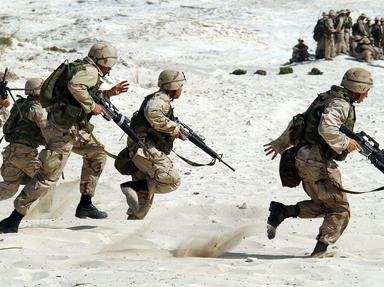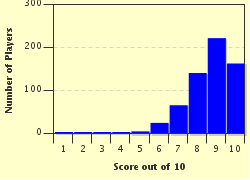Quiz Answer Key and Fun Facts
1. Begun by the annexation of Texas by the USA, what was the war between the USA and Mexico called?
2. The Cuban War of Independence and the Philippine Revolution, along with other issues, sparked a war between the USA and which country?
3. Which war, fought on islands in the west Pacific Ocean, lasted from 1899 to 1902, and was caused by a fundamental disagreement between the USA and revolutionaries?
4. World War I had many causes, but which was the immediate trigger?
5. Globally, World War II caused more deaths than any other war.
6. The Korean War began largely as a result of unresolved issues from World War II. Part of the reason was because two Allied countries decided to control Korea, split into two zones. Which two countries were these?
7. Which war in south east Asia, stemming from the Indochina War and the Cold War, saw heavy U.S. involvement?
8. A war, begun in 2001 as Operation Enduring Freedom, was fought primarily in which country, in which the USA took part?
9. A country in the Middle East was invaded by the USA and various allies in March 2003. Which country, allegedly possessing and developing weapons of mass destruction, was it?
10. The death of which leader led to the end of a revolution in Libya, a conflict in which the USA was a part?
Source: Author
Mariamir
This quiz was reviewed by FunTrivia editor
bloomsby before going online.
Any errors found in FunTrivia content are routinely corrected through our feedback system.

